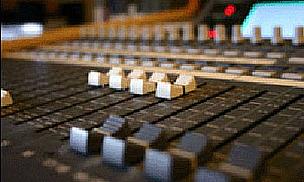The Three Phases Of Video Production

There are three main processes to putting a video together: pre-production, filming and editing.
Pre-Production – plan, plan, plan!
Pre-production is when ideas are brought together into a cohesive plan and the goals and objectives of your video are established. Think about your target audience, your budget and the message your video needs to convey.
Planning is of paramount importance – the more time you spend on planning, the more smoothly your filming will go and the better your final video will be. Consider what sort of set you need to use. If you are filming in a studio, do you need a green or blue screen behind the presenter (blonde hair = blue screen)? Think about what, if any, make-up will be required and whether any props are needed. How much filming time is needed?
Next your video needs to be scripted or storyboarded. This involves putting together the list of shots that will be required – the key elements that will make up your video.
From this, you will be able to develop your final script or storyboard. Your script will not only guide the filming team, but also gives the editing team an excellent guide to work from and provide the basis for any additional voiceover work.
Lighting is hugely important. You might be surprised at just how much light is needed for even the most basic of videos.
Time is needed to light the foreground, background and the subject. Shadows can appear from nowhere and it can be difficult to work out where they are coming from so don't be rushed. Time taken at this stage will reduce any work needed after the video has been shot.
Think about audio – make sure you are using the correct microphones and the sound you need is getting picked up. Use headphones plugged into the cameras to test the audio.
Filming
Safety. Tape or cover wires, weigh down your lights and take care around equipment. If possible, keep food and drink away from cameras, lights and audio equipment.
If you are on location, keep a close eye on your equipment and make sure it is secured if you have to leave it. Use equipment sign-in/sign-out lists to keep a record of where your equipment is and to minimise the risk of forgetting anything.
Make sure you leave plenty of time to set up and pack up.
Make sure everybody on the shoot is aware of their roles and responsibilities. One person should be directing and one person taking responsibility for filming, lighting and sound. Make sure everybody is aware of who to consult with in the case of issues or problems.
Ensure that all batteries are charged and spares are available, everybody has the means to contact everybody else (particularly if you are filming in a large space like a factory or sports stadium) and all equipment is in good working order.
Editing
Once filming is completed, download the raw footage onto a central storage location as soon as possible. The footage is copied onto a local machine and the video editing can begin.
We use the latest software (Final Cut Pro, Cinema 4D, Logic Pro) to edit our videos and will use YouTube to allow clients to view drafts of their video. This makes suggesting any changes a precise, quick and efficient process.



